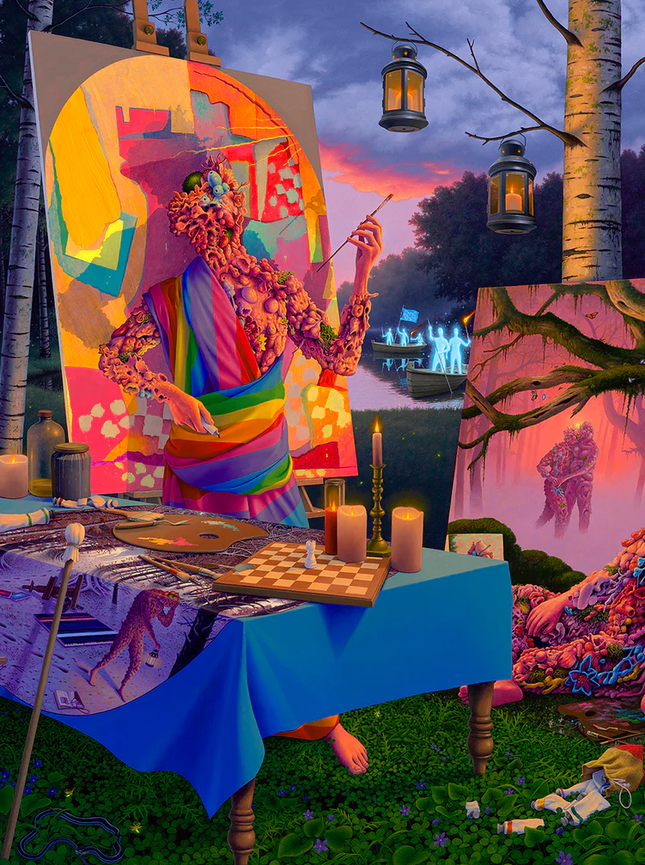
Tribal Druid & Native
-

Adrian Cox Painter's Tower Archival Print by Adrian Cox
Painter's Tower Archival Print by Adrian Cox Limited Edition on 290gsm Moab Entrada Fine Art Paper Pop Graffiti Street Artist Modern Artwork. 2023 Signed & Numbered Print Limited Edition of 50 Artwork Size 22x28 Archival Pigment Fine Art. The Essence of Adrian Cox's "Painter's Tower" Adrian Cox's "Painter's Tower" is a compelling piece that captures the essence of contemporary art through the lens of Street Pop Art and Graffiti Artwork. As an archival print, this work is part of a limited edition of 50, each piece signed and numbered, suggesting exclusivity and a personal touch from the artist. Printed on Moab Entrada fine art paper, a 290gsm cotton rag optimized for high-resolution detail, the artwork exhibits a richness in color and texture characteristic of Cox's meticulous approach. The dimensions of the artwork, 22x28 inches, offer a substantial visual field for Cox's intricate and mythical subject matter. Reflecting the Street Pop Art & Graffiti Artwork Aesthetic "Painter's Tower" is a testament to Cox's ability to interweave the sensibilities of pop art and the raw expressive power of graffiti. His portrayal of the 'Borderlands'—a serene yet complex world inhabited by 'Border Creatures'—challenges the viewer's perceptions. The creatures engage in creative acts, painting within a tower that defies conventional physics and logic. This blend of reality and fantasy, the natural and the supernatural, reflects street pop art and graffiti art's transformative power, often turning the ordinary into something extraordinary. A Visual Journey into Adrian Cox's Mythological Realm The print invites viewers on a visual journey into Cox's expansive mythological realm. The central figure, a 'Border Creature,' is engaged in painting, surrounded by a landscape that is both familiar and alien. It is a scene that captures the essence of creation—art-making art. The environment around the painter is alive with other 'Border Creatures', vibrant flora, and mystical structures, all under a sky transitioning from dusk to night. This scene is rich with symbolism and hints at the cycle of creation and transformation, resonating with the ever-evolving nature of Street Pop Art and graffiti Artwork. Adrian Cox's "PaintCox'sT" embodies the principles of modern artwork within the framework of street pop art and graffiti artwork. The limited edition print bridges the gap between fine art and the more publicly accessible street art, bringing mythological storytelling into a personal and universally relevant context. Cox’s work continues to inspire and captivate audiences, proving that the narratives of street art and pop graffiti can find harmony with the refined techniques of modern acceptable art practices.
$496.00


